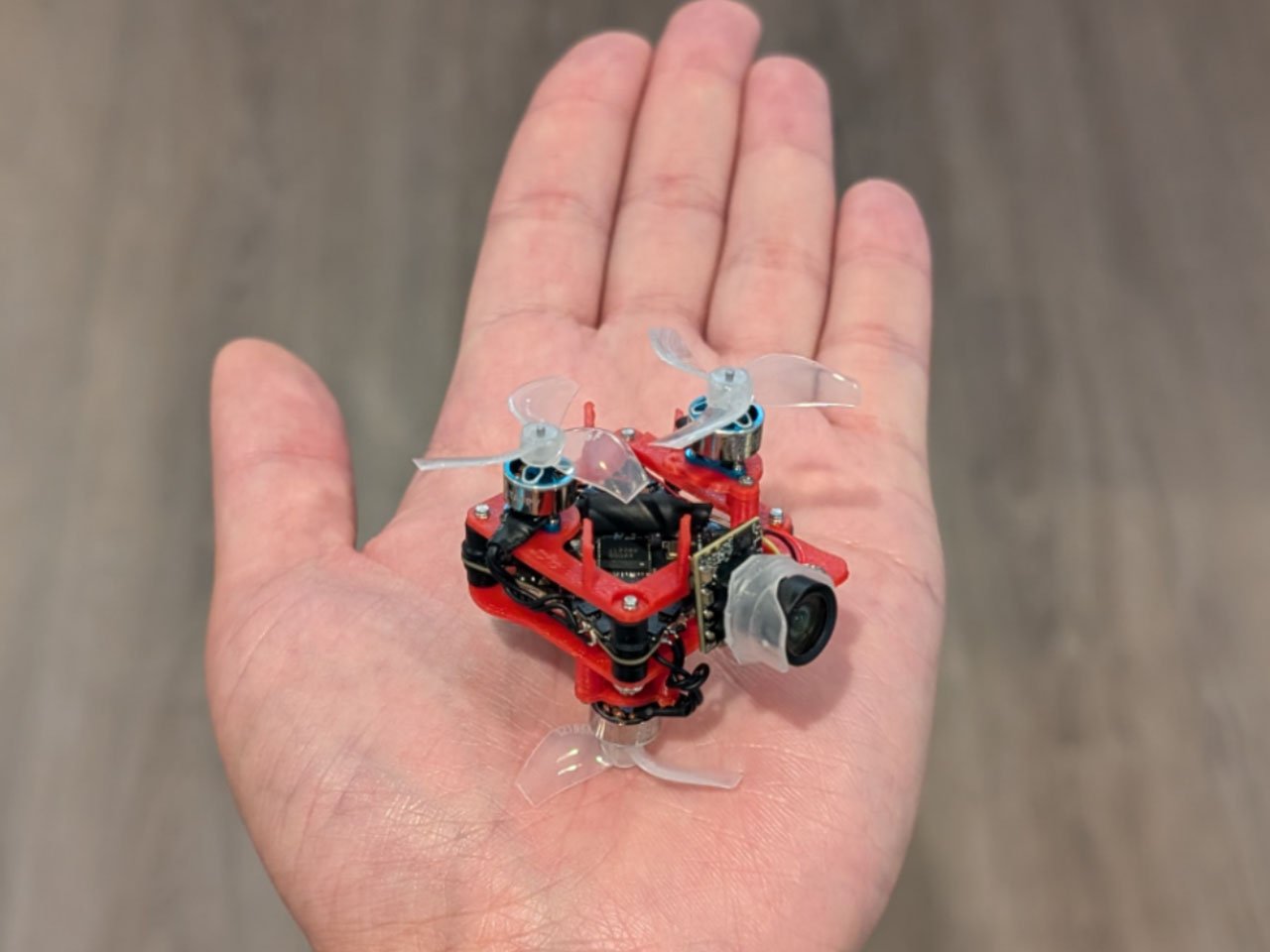What you are seeing here could be the smallest FPV quadcopter drone on the planet, measuring just 22.3 millimeters. That is comparable to the width of a coin, making the thing really tiny. The challenges in creating such a small drone are incomprehensible, right from aerodynamics to fitting the complex electronics inside a small frame. That’s the reason this flying machine ditches the landing gear and shielding.
Created by Hoarder Sam, a YouTuber who’s a DIY engineer, the microdrone brings the capabilities of a commercial 65-millimeter model inside a housing that’s one-third the size. You can literally fit it inside a Pringles without anyone even assuming. According to the DIYer, making anything smaller than 22 mm is currently not feasible, as the drone would be unstable in flight, have degraded efficiency, and would be hard to control. As a matter of fact, the PFV community deems 65 mm as the smallest practical size for flight, which in itself is an achievement for this DIY quadcopter.
Designer: Hoarder Sam
By adopting the right design approach, Hoarder managed to overcome all challenges and prove the community wrong with the world’s smallest FPV drone. It all started with the teardown of BetaFPV Air65 drone, which is regarded as one of the most compact FPV drones out there. He salvaged the brushless motor system, integrated a 5.8 GHz analog video transmitter, a high-precision ICM42688P gyroscope, and the STM32 G473 microcontroller. For such a miniature size, the body of the quadcopter needed to be durable and millimeter-precise. The best option is obviously a custom 3D-printed frame that manages to fit the mini electronics in a compressed layout.
For the frame, he employed the Bambu Lab A1 Mini desktop 3D printer to achieve the finer details with the 0.12-millimeter layer resolution. This helped eliminate overhangs and bridges, which is vital in achieving the intended small size without compromising the functionality. Tinkering around with the placement of the electronics meant the firmware had to be updated as well, since the current configuration is not calibrated for the new positioning of the flight control components. Sam went for the Betaflight Configurator software to fix this by rewriting the control parameters and tweaking the flight stability. After performing numerous flight tests and calibration, the drone took stable flight as intended.
The overall weight of the quadcopter is kept down to 25 grams, which helps in power efficiency and controlled maneuverability. That’s a feat in itself, considering the flying craft has a small camera and teeny little battery. The aircraft manages a flight time of under three minutes, which is impressive considering it falls just 30 seconds short of the larger counterpart. Landing and take-off are a bit stressful as the drone is vulnerable to damage, given it has no protection for the propellers.
The post DIYer builds world’s smallest FPV drone capable of stable flight first appeared on Yanko Design.

